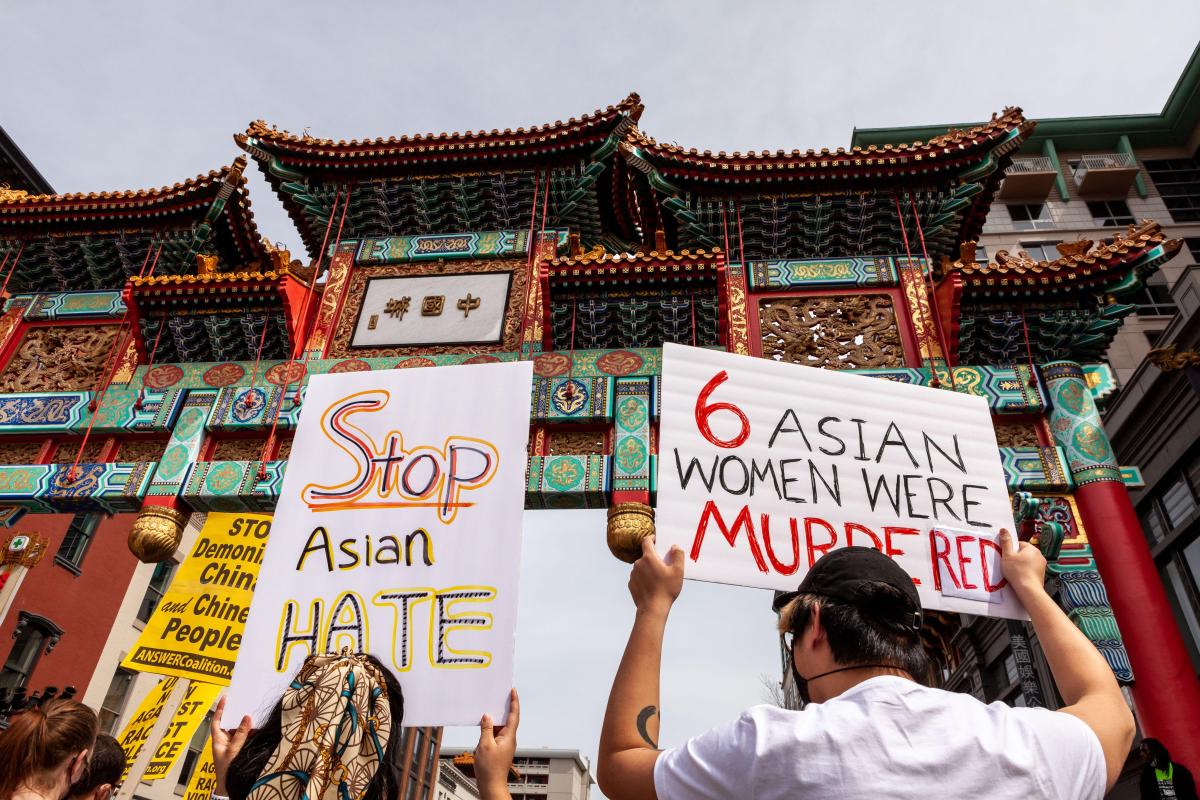
Migration, violence and the deep roots of US anti-Asian hate
On 16 March 2021, a young white man walked into three massage parlours in the US city of Atlanta, Georgia, and shot dead eight people. Six of the victims were women of Asian descent. The attacker, 21-year-old Robert Aaron Long, declared when questioned by the police that his actions weren’t racially motivated. His explanation for the massacre was that he might have had a 'sex addiction'.
The police and mainstream media were quick to run with Long’s self-diagnosis. Speaking to the press the day after the attacks, a police official said that it was too early to label them a hate crime: Long must have been ‘fed up’ when he carried out the massacre, he said, and having ‘a really bad day.’
Wendy Vogt first learned about the killings while watching chickens with her young son in a park close to her home in Indianapolis, where she is Associate Professor of Anthropology at Indiana University. ‘My sister in California texted me the news. We are Chinese-American. It hit her very hard.’
We need to see this kind of violence as intersectional. As if you can separate gender from race! It’s not possible, but in public discourse it often is – and that is highly problematic
When following the news coverage, Vogt was struck by the failure of public officials and the media to acknowledge that more than one dangerous ideology could be present in Long’s motives. ‘They were arguing that this wasn’t racially motivated, that it wasn’t because they were Asian, but because they were women. And, of course, we know that it’s both. We need to see this kind of violence as intersectional. As if you can separate gender from race! It’s not possible, but in public discourse it often is – and that is highly problematic.’ As one expert on extremism at Georgia State University wrote: ‘Killers can be racists and misogynists and suffer from mental illness all at once.’
The attacks helped spur a widespread protest movement to stop anti-Asian violence in the US. Asian communities pointed to the dramatic escalation of anti-Asian hate during the pandemic, in a context where Donald Trump insisted on dubbing Covid-19 the ‘China Virus’ and ‘Kung-flu’. Over 9,000 hate crimes against Asians in the US were recorded between March 2020 and June 2021.
For Vogt, an anthropologist and activist working on the experiences of Central Americans transiting through Mexico, the events in Atlanta were a turning point. ‘For the first time, I really sat down to think about the linkages between the kinds of violence my own community was facing – and has faced for a long time in the US – and the asylum-seeking women I’ve conducted research with in Mexico for over 15 years. How processes of racism and racialization play out and create long-lasting violence in people’s lives, on both sides of the border.’
The shift marks a turn towards reflecting on and theorising her own experiences as an Asian-American woman – a practice which links personal and anecdotal experiences with wider cultural and political meanings, what anthropologists call ‘auto-ethnography’. But it’s also about doing something less common in anthropology, says Vogt; ‘after studying violence in intimate, local contexts I’m increasingly seeing the value of zooming out, making links between contexts that appear disparate and disconnected but do in fact speak to each other.’
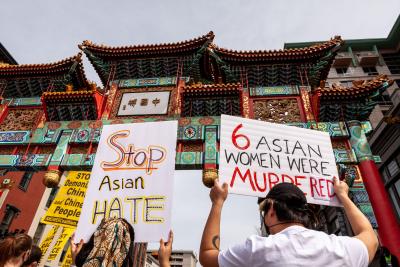
Auto-ethnography
Vogt’s mother was born in mainland China and escaped as a child with her family to Hong Kong, following the Communist Revolution. ‘It was a very profound experience. My grandparents hired a female smuggler to pose as her mother and help her cross into Hong Kong while they stowed away on fishing boats. There was family separation from both her parents for a time. It left a mark on her.’
The family then migrated to the US. ‘My grandfather was a chef. During those years, in the 1960s, it was fashionable for wealthy families in the US to have their chefs come from Hong Kong. So there was this whole network of Hong Kong chefs who worked in big mansions in Los Angeles. My mum was raised in the help quarters of one of those mansions.’
Racist sentiment directed at sexualized Asian bodies has a long history
Vogt spoke for the first time with her mother about her experiences of racism in the US after the Atlanta shootings. ‘That just hadn’t been a part of our conversations before then.’ Why this silence? It’s partly down to the ‘model minority’ myth which shapes how Asian communities are represented in public discourse as the successful, non-threatening and well-integrated ethnic minority, says Vogt – and the lack of seriousness with which their protests are taken when they do speak up. ‘That myth also erases significant differences — in culture, language, class — and inequalities among Asian communities. It masks the fact that there are about 1.7 million undocumented Asians in the United States.’
- https://www.diis.dk/en/projects/borderwork-migrants-brokers-and-european-border-governance-in-west-africa
- https://www.diis.dk/en/research/when-migrants-become-messengers
- https://www.diis.dk/en/research/everyday-resistance-to-european-border-control-in-mali
- https://www.diis.dk/en/event/does-more-information-save-migrants-lives
This myth also obscures the historical roots of the current wave of anti-Asian hate. As Harleen Singh, the director of the Women Studies Research Center at Brandeis University, warned in the LA Times, we shouldn’t be ‘presentist’ about the Atlanta shootings: ‘For bodies of colour – especially sexualized ones – there are always multiple layers to the exploitation.’
For those sharp enough to notice them, these layers were visible in the language Long used to rationalise his actions. The shootings were meant to eliminate the sexual ‘temptation’ represented by the women working in the massage parlours, he said. ‘Racist sentiment directed at sexualized Asian bodies has a long history,’ says Vogt.
As far back as 1875, the Page Act blocked (primarily Chinese) women from entering the US on the basis that their labour (assumed to be prostitution) was ‘immoral’. The Act did not, however, stop male Asians from migrating, albeit in limited numbers as manual labourers. Racialised and gendered ideas about Asians were expressed through the prism of the border. As Vogt puts it, ‘racial, gender and immigrant justice are linked.’
No borders between race and migration
Much of Vogt’s ethnographic work has focused on the violence occurring in ‘in-between’ spaces along the 2,000-3,000-mile Migration Trail from southern Mexico to the US border, in which Central American migrants spend weeks, months, and in some cases years in transit. As her work has helped document, these people regularly encounter abuse, rape, dismemberment, and death.
In December 2018, the Trump administration introduced the Migrant Protection Protocols (MPP), informally known as the ‘Remain in Mexico’ policy. Under MPP, migrants seeking asylum at the US-Mexico border can be returned to Mexico and told to wait there for the duration of their immigration proceedings. A recent ruling by the US Supreme Court rejected President Biden’s attempt to revoke the policy.
‘We’re producing violence through this kind of externalised border enforcement. The idea is that asylum seekers will wait in Mexico as a ‘safe third country’ while their cases are being processed. But my research has shown that Mexico is an extraordinarily violent and difficult place for Central Americans. People are waiting in northern border towns where human rights groups have documented thousands of cases of human rights violations against Central Americans.’
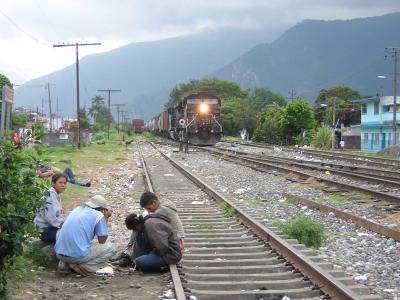
Much of this violence stems from the racism Central Americans face – ‘not just through racially motivated attacks on the ground, but also through immigration policies and practices such as the Migrant Protection Protocols, which exclude migrants from accessing safe routes or make asylum claims.’
Within my field, migration studies, I’m struck by the fact that discussions of race are often compartmentalized in our work
Yet, debates around immigration in the US are rarely discussed through a framework of race and racism, adds Vogt. ‘Even within my field, migration studies, I’m struck by the fact that discussions of race are often compartmentalized in our work. Or it’s discussed in relation to the communities and bodies that experience racism and violence, rather than the structures and institutions that in fact depend upon racialized violence to operate.’
The excitement around Kamala Harris’s historic appointment as Vice President centred both on her gender and immigrant heritage, as the child of parents born in Jamaica and India. But Harris has also been tapped as the person to deal with the so-called ‘immigration crisis’, says Vogt.
In one of her first public addresses, Harris travelled to Guatemala to deliver a blunt message to would-be migrants: ‘Do not come, do not come’. ‘The rhetoric has been toned down since Trump – we’re not talking about the Big Wall and using overtly racist language anymore – but the policies haven’t shifted that much. What Harris is doing is a continuation of information campaigns in Central America, including on the radio and other news platforms, which have been trying for years to urge people not to come.’
Slow violence
While spectacular acts of violence such as the Atlanta shootings receive much attention in the public domain, Vogt’s work has been preoccupied with theorizing how violence can also accumulate, slowly, over a lifetime. Many of the migrants she has worked with ‘do not conceptualize the violence they experience along the journey as new or unique, but as a continuation of processes they have known their whole lives.’
The violence of migration, then, becomes relative to the violence experienced back home as a feature of everyday life. The so-called ‘Northern Triangle’ of Guatemala, Honduras and El Salvador leads the world in homicide rates. According to the UN, there were 82.84 homicides per 100,000 inhabitants in El Salvador in 2016.
...the politics of race are embedded into policies and militarization projects that funnel migrants into more dangerous routes, and also through the systematic racial profiling of migrants by police who target migrants for extortion and violence
Vogt’s research shows that direct and blatant acts of racism against Central Americans are certainly not uncommon along the Migrant Trail. But her analysis takes a zoomed-out perspective, focusing on how ‘the politics of race are embedded into policies and militarization projects that funnel migrants into more dangerous routes, and also through the systematic racial profiling of migrants by police who target migrants for extortion and violence. That kind of institutional analysis can be used to understand racism within the US’s borders as well.’
During fieldwork in 2009, she worked closely with two shelters in Oaxaca, a state in southwestern Mexico. ‘We began hearing the same stories of buses being stopped by police in the same location along the mountain road that connects them,’ she remembers.
‘Police boarded the bus where they somehow knew exactly who the unauthorized migrants were, rounded them up outside, and demanded they hand over all their money or be deported. Police typically let them re-board the bus and carry on their journey. The role of the police – who, we later established, worked in concert with the bus company and drivers to tip off who the suspected irregular migrants were – was not to enforce the law, but to profit from the movement and vulnerability of migrants who were undocumented, gendered and racialized as ‘other’.’
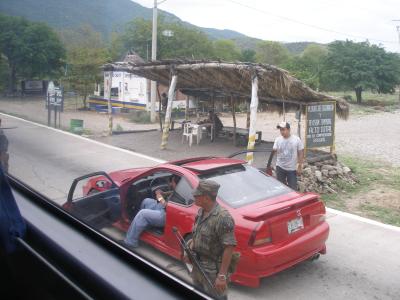
Covid-19
This rhetoric is dangerous but it’s also not new – it’s always been used in times of crisis, whether it’s the Swine Flu or Ebola, the discourse is that immigrants are carriers of disease
If the pandemic led to a rise in anti-Asian hate within the US’s borders, it has also served to reinforce divisive narratives which paint migrants crossing the Mexico border as a major security threat. Right wing critics of Biden have blamed the President’s policies at the Mexico border for the current rapid spread of the Delta variant in the US. Texas’s Republication governor, Greg Abbott, talked of ‘the importation of Covid-19’ by migrants. ‘This rhetoric is dangerous but it’s also not new – it’s always been used in times of crisis, whether it’s the Swine Flu or Ebola, the discourse is that immigrants are carriers of disease,’ says Vogt.
Where are these developments leading? ‘I’m not very optimistic. The rhetoric from central government has calmed down, but the Biden Administration is still deporting. There’s evidence that people are being repatriated back into conditions of violence, people who are seeking asylum.’
In mid-September, a federal judge ruled to end Title 42, a public health law implemented in March 2020 by the Trump Administration that allows US Border Patrol to automatically expel asylum seekers without due process.
‘The Biden Administration has already appealed the decision, making it clear that they intend to continue to defend and implement Title 42. This is hugely disappointing, but not particularly surprising.’ Despite the fact that organisations such as Human Rights Watch have identified the order as a breach of US and international laws protecting refugees, the Biden Administration ‘has been hiding behind this order as part of its hardline immigration enforcement strategy.’
The Administration has also ramped up its efforts to deport around 12,000 mostly Haitian asylum seekers in what may be one of the largest mass expulsions in recent US history. ‘It is not a coincidence that most people impacted by these policies are people of colour, and many of them women and children — again, we must analyse and understand these policies through an intersectional lens of race and racism.’
From where does Vogt gather hope and energy, against this bleak backdrop? ‘For me, and I think for many anthropologists, doing ethnography is an intensely intimate experience where we not only gather impressions and information, but also make connections and build relationships. And it’s been enriching for me to not only bring my own family’s immigration history into this story – as part of my research process – but also more recently into my analyses and writing.’
‘Many of my students are also the children of immigrants and it has been quite profound to think about the ways migrant journeys and histories leave marks on families for generations. I have found these more personal and affective connections to be a source of power, solidarity and activism.’
Wendy Vogt visited DIIS in August 2021 for the conference ‘The Long Shadow of the Border: Lives, Limits, Longings’, organised by the Borderwork research project.
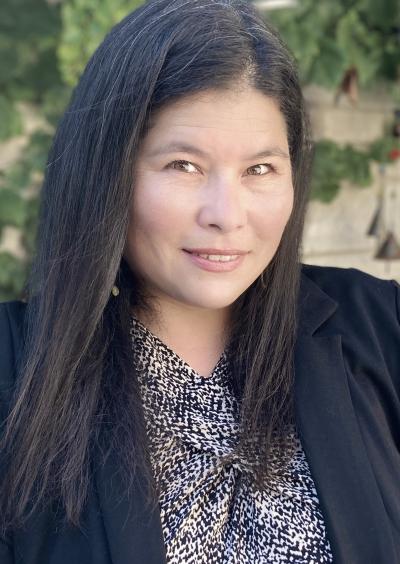
Wendy Vogt is a cultural anthropologist interested in politically engaged anthropology, migration, transit journeys, violence, human rights and transnational feminisms.
She is Associate Professor of Anthropology at Indiana University-Purdue University Indianapolis and received her doctorate in Anthropology from the University of Arizona in Tucson, in 2012.
She is the author of the monograph Lives in Transit: Violence and Intimacy on the Migrant Journey (2018). The book is based on ethnographic fieldwork with Central American migrants in transit through Mexico, carried out between 2006-2013 in humanitarian aid shelters and other transit points.
Alice Troy-Donovan is researching the externalisation of the EU’s borders into West Africa and made this interview during her internship at the Borderwork project at DIIS.
